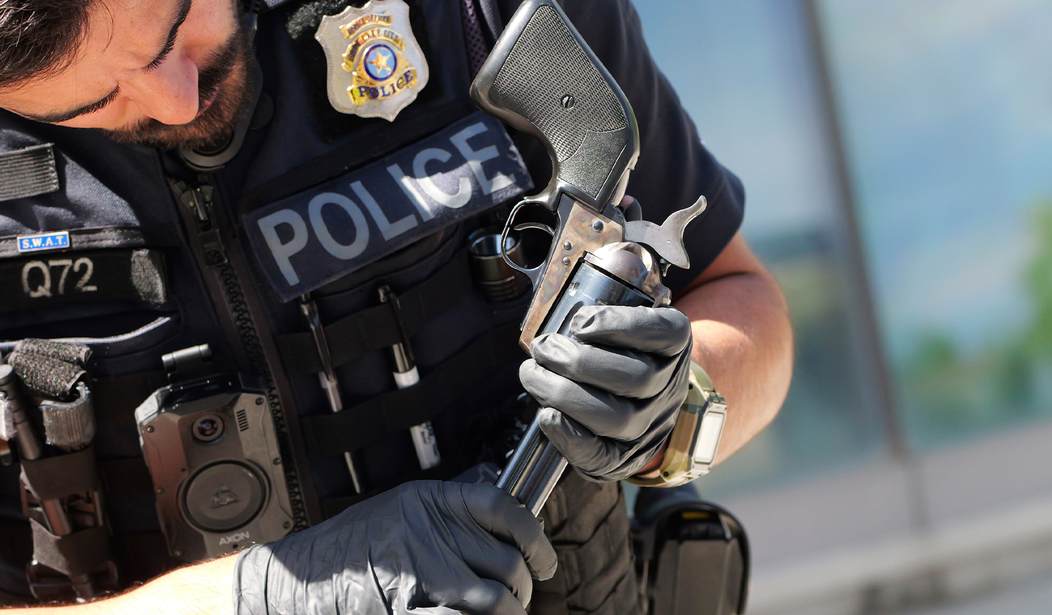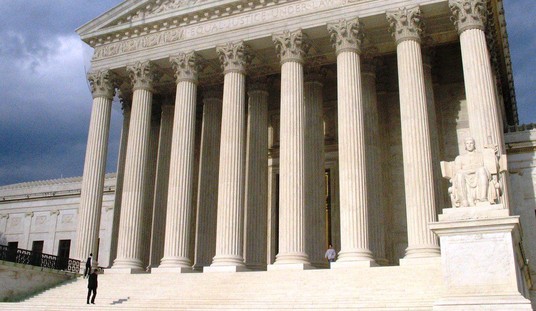For the most part, gun control activists are pretty good at staying on-script and sticking to their talking points, though every now and then we’re treated to a little taste of the truth, like when Gabrielle Giffords told a Time reporter that the ultimate goal of her organization is “no more guns.”
The latest anti-gunner to let the mask slip is Christian Heyne, vice president of policy and programs at Brady. Heyne was quizzed by the Washington Post about the fact that the District of Columbia’s “red flag” law has only been used a handful of times since it was put in place four-and-a-half years ago, and while Heyne initially claimed that the reason why only 51 cases have been filed since December of 2018 was a lack of public awareness about the law, he inadvertently acknowledged that D.C.’s draconian gun laws aren’t doing much to keep people from illegally acquiring them.
The District and 21 states have some type of extreme-risk law, intended to defuse volatile situations ranging from domestic violence to mental health crises by removing guns from the picture. Police, mental health providers or dating partners, roommates or family members can file a petition to have a gun removed, and with a judge’s blessing, the weapon is taken for up to two weeks. If a judge finds that a person continues to pose a threat to themselves or others, the gun can be removed for a year after a final hearing. That happened in just under half the 51 cases.
But the law only works if people know to use it, said Christian Heyne, vice president of policy and programs at Brady, a gun violence prevention organization. “One of the biggest barriers we have to emergency risk laws is folks are largely unaware,” he said.
D.C.’s use of the law pales in comparison with some of its neighbors. In nearby Fairfax County, which has about 1.1 million residents to the District’s roughly 700,000, prosecutors have handled roughly 100 red-flag cases since October alone under Virginia’s law, which passed in 2020. But Heyne noted it can be difficult to compare D.C. with other jurisdictions, because many of the guns in the District are illegal, meaning police can seize them without an emergency order.
Janese Bechtol, chief of the D.C. attorney general’s domestic violence and special victims unit, said that appears to be a core reason the city’s red-flag law has not been used more often.
“If it’s an illegal weapon, we can get rid of it without going through court,” Bechtol said.
Yes, Christian, many of the guns in D.C. are possessed illegally, but if your favored gun laws actually worked at preventing criminals from getting their hands on a gun then that wouldn’t be the case, would it?
D.C. makes it damned difficult to legally purchase and possess a firearm by forcing would-be gun owners to navigate a bureaucratic maze of licensing and registration schemes, none of which have done much at all to reduce violent crime. The District is currently in the midst of a homicide spike, with murders up 27% compared to last year, even as the national homicide rate appears to be headed for its biggest one-year decline in more than a century.
D.C. has recorded 166 homicides this year, compared with 131 at this time last year — a roughly 27 percent increase. Shootings are up 20 percent, and more juveniles have been killed so far this year than in all of 2022. In contrast, homicides are down about 24 percent in nearby Baltimore, which could end the year with under 300 killings for the first time since the riots over Freddie Gray’s death in police custody in 2015.
Of nearly 70 police departments surveyed by an organization of big city police chiefs, 48 reported reductions in homicides through the end of June, compared with the same period last year. Of the cities with increases, only four had bigger percentage spikes than D.C. Other cities with rising homicides this year include Kansas City, which is on pace for a record-breaking annual count, Cleveland and Memphis.
Since the Post compared the use of “red flag” laws in the District and nearby Fairfax County, Virginia, let’s do the same for murders. There’ve been 166 homicides in the District so far this year, while in Fairfax County (home to far more legal gun owners as well as more relaxed gun laws) there’ve only been six homicides documented by the Fairfax County PD since January 1. Heyne might want to credit Virginia’s “red flag” law for the difference, but the truth is that the safest parts of the D.C. Metro area have always been in Virginia, home to the area’s sanest gun laws. In 2018, for instance, the year before the District’s “red flag” law took effect, there were 13 homicides in Fairfax County. In D.C. the number was more than ten times higher despite having about 400,000 fewer residents; 159 murders between January 1st and December 31st.
I think Heyne and Janese Bechtol are on to something when they say that the primary reason the District’s “red flag” law isn’t used more often is that many of the guns in D.C. are possessed illegally. I just wish Heyne was honest enough to admit what that says about the efficacy of the District’s gun laws and the overarching ideology of the gun control lobby. If gun control worked D.C. should be the safest part of the DMV, but instead, locations with the strictest gun laws like the District and Prince George’s County, Maryland are the most dangerous places to live and work in the Capitol region, and the rate of “red flag” orders has nothing to do with D.C.’s growing dangerousness.








